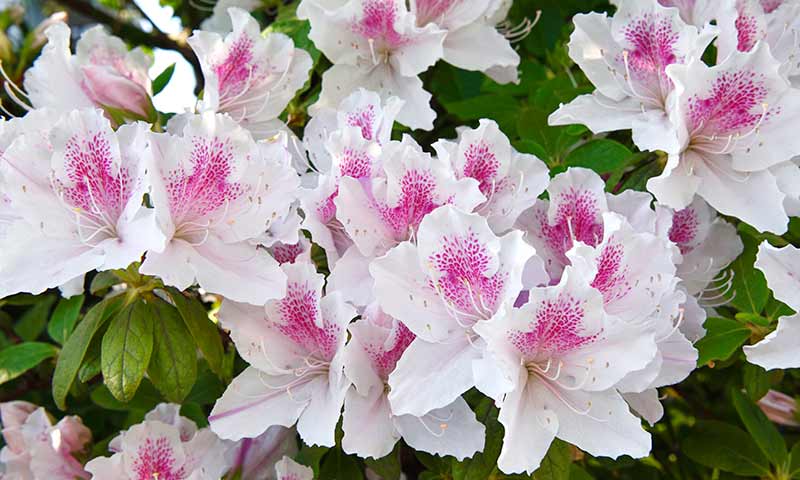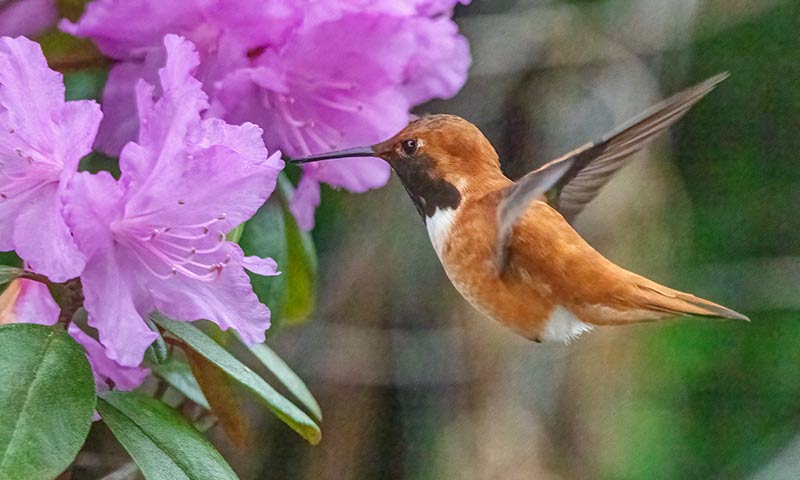How to Grow and Care for Azaleas
When azaleas break out in bloom, it's hard to resist the urge to add one or more of these beauties to your yard. Don't be dissuaded by their reputation for being finicky. These spectacular shrubs aren't hard to grow — as long as you choose wisely and meet their special needs. Throw in an added dose of TLC, and you can grow gorgeous azaleas of your very own.
- Choosing Azaleas for Your Garden
- Giving Azaleas the Right Soil
- Watering Your Azaleas
- Feeding Your Azaleas
- Pruning Your Azaleas
Choosing Azaleas for Your Garden
Thanks to modern plant breeders, azaleas aren't just for southern and coastal gardeners anymore. Wherever you live in the United States, you can enjoy beautiful azaleas by selecting the right plants from the start. When choosing azaleas for your garden, keep the following in mind:
- Growing zone. Flower buds on spring-blooming azaleas form long before winter hits. Unless those buds withstand your winter temps, forget about spring blooms. Many azaleas are only bud-hardy in the country's southern half, but some northern-bred types can withstand minus 45 degrees Fahrenheit. (That's not a typo; that's 45 degrees below zero.) Try your local county extension agent for tips on azaleas that thrive where you grow.
- Light conditions. You may think of azaleas as shade plants, but many varieties tolerate direct sun — and some even require it. In northern climates, where rays are less intense, azaleas often prefer more sunlight. For glossy leaves and abundant blooms, match your azaleas to your garden's light conditions.
- Mature size. Some azaleas, including a few native types, grow 20 feet tall or more. But plenty of more diminutive options are in play. Dwarf azaleas grow 2 to 3 feet tall, and many garden
- Bloom time. Azaleas are famous for springtime beauty, but they come in early, mid- or late-flowering varieties. Reblooming types pull double duty and flower in spring and again in fall. Grow various azaleas with staggered bloom times and extend the show for months.
- Flower color and form. Azalea flowers offer something for everybody with their broad color span and flowers that range from delicate spidery petals to bold ruffled blooms. Eliminate surprises; buy azaleas in flower so you know exactly what you're getting.
- Leaf retention. Some azaleas are evergreen and keep their leaves year-round, but others are deciduous, meaning they naturally lose their leaves in fall. Know what to expect from the type you choose. If leaves drop, you'll know if it's natural or not.

When you nurture your soil, azaleas respond.
Giving Azaleas the Right Soil
Azaleas fall in the same plant family as blueberries and other shrubs sometimes called "acid-loving" plants. To reach their full dazzle potential, azaleas and some other acid-lovers need acidic soil with a pH as low as 4.0 to 5.5. In that range, specific nutrients azaleas need stay readily available. When soil pH moves higher, some nutrients get restricted and azaleas suffer nutrient deficiencies that cause yellow leaves.
Some parts of the United States have naturally acidic soil, perfect for azaleas. If that's not you, your garden may need soil amendments, such as sulfur or ammonium sulfate, to meet azaleas' soil pH needs. A simple soil test — super easy and fun — can tell you your soil pH and recommend how to get it perfect for azaleas. If you've never done a soil test, there's no better way to get to know your own precious slice of earth.
At planting time, take time to nurture your soil and your roots. Pennington Rejuvenate Natural & Organic Garden Soil Mix revitalizes native soil with essential plant nutrients and Earth-friendly ingredients like earthworm castings, added bio-stimulants and sustainably sourced peat that work in harmony to improve your soil.
Well-aerated, well-draining soil helps make sure azalea roots get plenty of oxygen. Always plant azaleas at or slightly higher than the level they were growing at in their nursery pot. Avoid planting azaleas too deep.

Azaleas in your garden invite hummingbirds to stop in for brunch.
Watering Your Azaleas
Azaleas have shallow root systems compared to other shrubs; most of their roots stay in the top 4 to 6 inches of soil. As you might guess, this makes them very susceptible to water stress and drought. Keep azalea soil evenly moist, so it never dries completely out and never stays overly wet. Plants in sun typically dry out faster and need more water than shaded plantings. A 3-inch layer of organic mulch helps keep soil moisture and temperatures consistent.
Learn to check the soil around your azalea by hand. Water when soil is dry to the touch. Water deeply and thoroughly, so each plant gets water equal to about 1 inch of rain per week in summer. Water slowly, so the water gets absorbed into the root area instead of running off into your yard. Avoid overwatering — soggy soil is a fast track to azalea root rot.
When possible, use drip irrigation or water the soil around your azalea instead of watering its leaves. Wet leaves encourage some fungal diseases, which your garden can do without. Water early in the day so the sun can dry leaves if you get a little wild with the hose.
Feeding Your Azaleas
A premium fertilizer designed especially for azaleas, such as Pennington Rejuvenate Plant Food Evergreen & Azalea 4-3-3, provides your azaleas with the basic foundational nutrients they need, in the best ratio to promote healthy foliage and beautiful blooms.
Pennington Rejuvenate Plant Food Evergreen & Azalea 4-3-3 starts feeding right away, then keeps feeding azaleas for up to four months. Fertilize established azaleas in early spring and again 12 to 16 weeks later, and you have their nutrients covered for the year.
Broadcast the fertilizer over the area under your shrubs and out about 6 inches past the branch tips, then water the entire area well. Shallow roots are sensitive to overfertilizing, so follow label instructions and don't overdo it.

If you prune azaleas, time it for right after bloom time.
Pruning Your Azaleas
Most azaleas do well with little or no pruning, yet they don't mind being pruned. But pruners beware, timing is everything with azaleas. As with all flowering trees and shrubs, pruning at the wrong time can leave you bloomless the next season. Spring-blooming azaleas, for example, form their flower buds during the previous summer. You can't see them right away, but they're there. Prune those stems in fall or winter, and you'll sacrifice your spring blooms — and disappoint hummingbirds and other pollinators.
To prevent lost flowers, always prune azaleas right after they finish blooming — before new flower buds can form. For reblooming types that flower early on old stems and later on new growth, the first flush of flowers is usually the biggest. Prune these types right after their first bloom period to promote the most flowers for the next year. Prune dead and damaged wood any time. Just remember, pruned branches may equal pruned buds.
At Pennington, we've been helping people create the yards and gardens of their dreams since 1945. It's kind of our specialty. We're glad you're here. From traffic-stopping azaleas to homegrown veggies, we want to help your dreams come true. We're here for you.
Always read the product label and follow instructions carefully.




